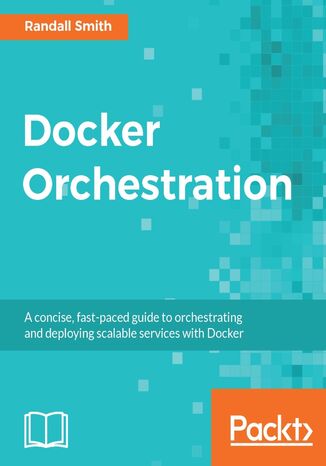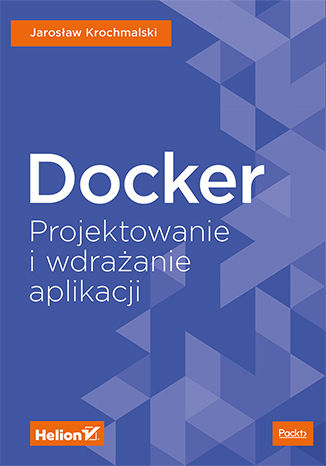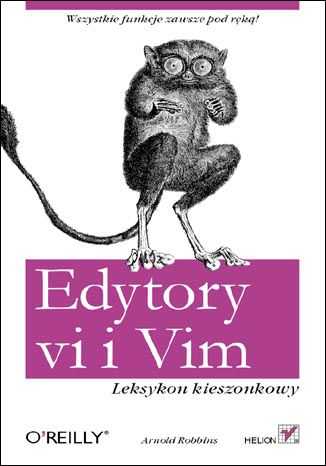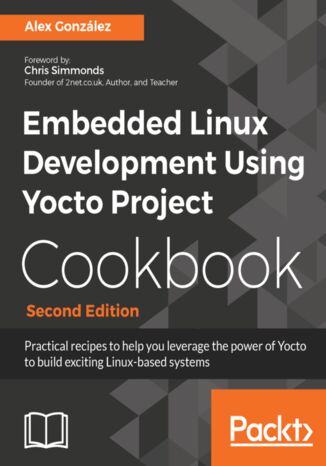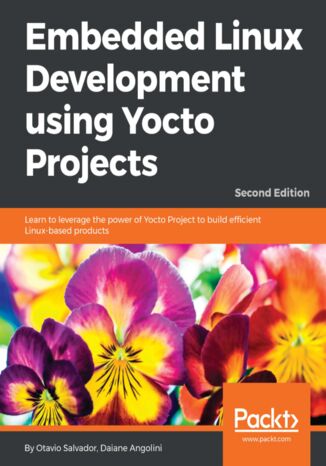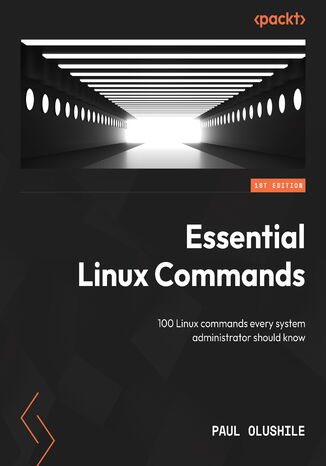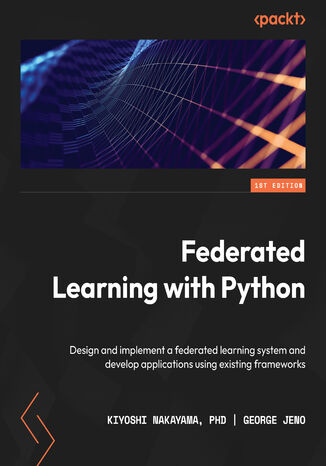Kategorien
E-Books
-
Wirtschaft
- Bitcoin
- Geschäftsfrau
- Coaching
- Controlling
- E-Business
- Ökonomie
- Finanzen
- Börse und Investitionen
- Persönliche Kompetenzen
- Computer im Büro
- Kommunikation und Verhandlungen
- Kleines Unternehmen
- Marketing
- Motivation
- Multimedia-Training
- Immobilien
- Überzeugung und NLP
- Steuern
- Sozialpolitik
- Handbȕcher
- Präsentationen
- Führung
- Public Relation
- Berichte, Analysen
- Geheimnis
- Social Media
- Verkauf
- Start-up
- Ihre Karriere
- Management
- Projektmanagement
- Personal (HR)
-
Für Kinder
-
Für Jugendliche
-
Bildung
-
Enzyklopädien, Wörterbücher
-
E-Presse
- Architektura i wnętrza
- Sicherheit und Gesundheit am Arbeitsplatz
- Biznes i Ekonomia
- Haus und Garten
- E-Business
- Ekonomia i finanse
- Esoterik
- Finanzen
- Persönliche Finanzen
- Unternehmen
- Fotografie
- Informatik
- HR und Gehaltsabrechnung
- Frauen
- Computer, Excel
- Buchhaltung
- Kultur und Literatur
- Wissenschaftlich und akademisch
- Umweltschutz
- meinungsbildend
- Bildung
- Steuern
- Reisen
- Psychologie
- Religion
- Landwirtschaft
- Buch- und Pressemarkt
- Transport und Spedition
- Gesundheit und Schönheit
-
Geschichte
-
Informatik
- Office-Programme
- Datenbank
- Bioinformatik
- IT Branche
- CAD/CAM
- Digital Lifestyle
- DTP
- Elektronik
- Digitale Fotografie
- Computergrafik
- Spiele
- Hacking
- Hardware
- IT w ekonomii
- Wissenschaftliche Pakete
- Schulbücher
- Computergrundlagen
- Programmierung
- Mobile-Programmierung
- Internet-Server
- Computernetzwerke
- Start-up
- Betriebssysteme
- Künstliche Inteligenz
- Technik für Kinder
- Webmaster
-
Andere
-
Fremdsprachen lernen
-
Kultur und Kunst
-
Lektüre
-
Literatur
- Anthologien
- Ballade
- Biografien und Autobiografien
- Für Erwachsene
- Drama
- Tagebücher, Memoiren, Briefe
- Epos
- Essay
- Science Fiction
- Felietonys
- Fiktion
- Humor, Satire
- Andere
- Klassisch
- Krimi
- Sachbücher
- Belletristik
- Mity i legendy
- Nobelpreisträger
- Kurzgeschichten
- Gesellschaftlich
- Okultyzm i magia
- Erzählung
- Erinnerungen
- Reisen
- Gedicht
- Poesie
- Politik
- Populärwissenschaftlich
- Roman
- Historischer Roman
- Prosa
- Abenteuer
- Journalismus
- Reportage
- Romans i literatura obyczajowa
- Sensation
- Thriller, Horror
- Interviews und Erinnerungen
-
Naturwissenschaften
-
Sozialwissenschaften
-
Schulbücher
-
Populärwissenschaft und akademisch
- Archäologie
- Bibliotekoznawstwo
- Filmwissenschaft
- Philologie
- Polnische Philologie
- Philosophie
- Finanse i bankowość
- Erdkunde
- Wirtschaft
- Handel. Weltwirtschaft
- Geschichte und Archäologie
- Kunst- und Architekturgeschichte
- Kulturwissenschaft
- Linguistik
- Literaturwissenschaft
- Logistik
- Mathematik
- Medizin
- Geisteswissenschaften
- Pädagogik
- Lehrmittel
- Populärwissenschaftlich
- Andere
- Psychologie
- Soziologie
- Theatrologie
- Teologie
- Theorien und Wirtschaftswissenschaften
- Transport i spedycja
- Sportunterricht
- Zarządzanie i marketing
-
Handbȕcher
-
Spielanleitungen
-
Professioneller und fachkundige Leitfaden
-
Jura
- Sicherheit und Gesundheit am Arbeitsplatz
- Geschichte
- Verkehrsregeln. Führerschein
- Rechtswissenschaften
- Gesundheitswesen
- Allgemeines. Wissenskompendium
- akademische Bücher
- Andere
- Bau- und Wohnungsrecht
- Zivilrecht
- Finanzrecht
- Wirtschaftsrecht
- Wirtschafts- und Handelsrecht
- Strafrecht
- Strafrecht. Kriminelle Taten. Kriminologie
- Internationales Recht
- Internationales und ausländisches Recht
- Gesundheitsschutzgesetz
- Bildungsrecht
- Steuerrecht
- Arbeits- und Sozialversicherungsrecht
- Öffentliches, Verfassungs- und Verwaltungsrecht
- Familien- und Vormundschaftsrecht
- Agrarrecht
- Sozialrecht, Arbeitsrecht
- EU-Recht
- Industrie
- Agrar- und Umweltschutz
- Wörterbücher und Enzyklopädien
- Öffentliche Auftragsvergabe
- Management
-
Führer und Reisen
- Afrika
- Alben
- Südamerika
- Mittel- und Nordamerika
- Australien, Neuseeland, Ozeanien
- Österreich
- Asien
- Balkan
- Naher Osten
- Bulgarien
- China
- Kroatien
- Tschechische Republik
- Dänemark
- Ägypten
- Estland
- Europa
- Frankreich
- Berge
- Griechenland
- Spanien
- Niederlande
- Island
- Litauen
- Lettland
- Mapy, Plany miast, Atlasy
- Miniführer
- Deutschland
- Norwegen
- Aktive Reisen
- Polen
- Portugal
- Andere
- Przewodniki po hotelach i restauracjach
- Russland
- Rumänien
- Slowakei
- Slowenien
- Schweiz
- Schweden
- Welt
- Türkei
- Ukraine
- Ungarn
- Großbritannien
- Italien
-
Psychologie
- Lebensphilosophien
- Kompetencje psychospołeczne
- zwischenmenschliche Kommunikation
- Mindfulness
- Allgemeines
- Überzeugung und NLP
- Akademische Psychologie
- Psychologie von Seele und Geist
- Arbeitspsychologie
- Relacje i związki
- Elternschafts- und Kinderpsychologie
- Problemlösung
- Intellektuelle Entwicklung
- Geheimnis
- Sexualität
- Verführung
- Aussehen ind Image
- Lebensphilosophien
-
Religion
-
Sport, Fitness, Diäten
-
Technik und Mechanik
Hörbücher
-
Wirtschaft
- Bitcoin
- Geschäftsfrau
- Coaching
- Controlling
- E-Business
- Ökonomie
- Finanzen
- Börse und Investitionen
- Persönliche Kompetenzen
- Kommunikation und Verhandlungen
- Kleines Unternehmen
- Marketing
- Motivation
- Immobilien
- Überzeugung und NLP
- Steuern
- Sozialpolitik
- Handbȕcher
- Präsentationen
- Führung
- Public Relation
- Geheimnis
- Social Media
- Verkauf
- Start-up
- Ihre Karriere
- Management
- Projektmanagement
- Personal (HR)
-
Für Kinder
-
Für Jugendliche
-
Bildung
-
Enzyklopädien, Wörterbücher
-
E-Presse
-
Geschichte
-
Informatik
-
Andere
-
Fremdsprachen lernen
-
Kultur und Kunst
-
Lektüre
-
Literatur
- Anthologien
- Ballade
- Biografien und Autobiografien
- Für Erwachsene
- Drama
- Tagebücher, Memoiren, Briefe
- Epos
- Essay
- Science Fiction
- Felietonys
- Fiktion
- Humor, Satire
- Andere
- Klassisch
- Krimi
- Sachbücher
- Belletristik
- Mity i legendy
- Nobelpreisträger
- Kurzgeschichten
- Gesellschaftlich
- Okultyzm i magia
- Erzählung
- Erinnerungen
- Reisen
- Poesie
- Politik
- Populärwissenschaftlich
- Roman
- Historischer Roman
- Prosa
- Abenteuer
- Journalismus
- Reportage
- Romans i literatura obyczajowa
- Sensation
- Thriller, Horror
- Interviews und Erinnerungen
-
Naturwissenschaften
-
Sozialwissenschaften
-
Populärwissenschaft und akademisch
- Archäologie
- Philosophie
- Wirtschaft
- Handel. Weltwirtschaft
- Geschichte und Archäologie
- Kunst- und Architekturgeschichte
- Kulturwissenschaft
- Literaturwissenschaft
- Mathematik
- Medizin
- Geisteswissenschaften
- Pädagogik
- Lehrmittel
- Populärwissenschaftlich
- Andere
- Psychologie
- Soziologie
- Teologie
- Zarządzanie i marketing
-
Handbȕcher
-
Professioneller und fachkundige Leitfaden
-
Jura
-
Führer und Reisen
-
Psychologie
- Lebensphilosophien
- zwischenmenschliche Kommunikation
- Mindfulness
- Allgemeines
- Überzeugung und NLP
- Akademische Psychologie
- Psychologie von Seele und Geist
- Arbeitspsychologie
- Relacje i związki
- Elternschafts- und Kinderpsychologie
- Problemlösung
- Intellektuelle Entwicklung
- Geheimnis
- Sexualität
- Verführung
- Aussehen ind Image
- Lebensphilosophien
-
Religion
-
Sport, Fitness, Diäten
-
Technik und Mechanik
Videokurse
-
Datenbank
-
Big Data
-
Biznes, ekonomia i marketing
-
Cybersicherheit
-
Data Science
-
DevOps
-
Für Kinder
-
Elektronik
-
Grafik / Video / CAX
-
Spiele
-
Microsoft Office
-
Entwicklungstools
-
Programmierung
-
Persönliche Entwicklung
-
Computernetzwerke
-
Betriebssysteme
-
Softwaretest
-
Mobile Geräte
-
UX/UI
-
Web development
-
Management
Podcasts
- E-Books
- Betriebssysteme
- Linux
Linux
Docker Orchestration. Click here to enter text
Docker orchestration is what you need when transitioning from deploying containers individually on a single host to deploying complex multi-container apps on many machines.This book covers the new orchestration features of Docker 1.12 and helps you efficiently build, test, and deploy your application using Docker. You will be shown how to build multi-container applications using Docker Compose. You will also be introduced to the building blocks for multi-host Docker clusters such as registry, overlay networks, and shared storage using practical examples. This book gives an overview of core tools such as Docker Machine, Swarm, and Compose which will enhance your orchestration skills. You’ll learn how to set up a swarm using the decentralized building block. Next, you’ll be shown how to make the most out of the in-built orchestration feature of Docker engine and you’ll use third-party tools such as Kubernetes, Mesosphere, and CoreOS to orchestrate your existing process. Finally, you will learn to deploy cluster hosts on cloud services and automate your infrastructure.
Docker. Praktyczne zastosowania
Docker został zaprezentowany światu w marcu 2013 roku i praktycznie od początku wzbudza zaskakujące zainteresowanie. Narzędzie to pozwala na proste zarządzanie procesem tworzenia określonego elementu aplikacji, wdrażania go na dużą skalę w dowolnym środowisku oraz usprawniania przepływu pracy. Ma przy tym duże możliwości i łączy w sobie prostotę wdrażania aplikacji z prostotą administrowania. Jednym słowem, Docker jest niezwykle użytecznym narzędziem! Niniejsza książka jest praktycznym przewodnikiem, dzięki któremu Docker przyczyni się do sukcesu organizacji na wiele sposobów: uprości podejmowanie decyzji dotyczących architektury, ułatwi pisanie narzędzi pomocniczych, a przede wszystkim umożliwi bezproblemowe przeprowadzanie integracji kolejnych elementów aplikacji. Opisano tu, w jaki sposób za pomocą Dockera można przygotować pakiet aplikacji ze wszystkimi ich zależnościami, a następnie je testować, wdrażać, skalować oraz utrzymywać ich pracę w środowiskach produkcyjnych. W tej książce omówiono: wykorzystanie Dockera do automatyzacji i uproszczenia obsługi pakietów zasady pracy z obrazami, kontenerami i aplikacjami Dockera dołączanie do kodu aplikacji niezbędnych plików systemu operacyjnego możliwość testowania tego samego elementu aplikacji we wszystkich systemach i środowiskach oddzielenie warstwy aplikacji od warstwy sprzętowej bez poświęcania cennych zasobów zagadnienia konfiguracji sieci, koordynacji, bezpieczeństwa i zarządzania konfiguracją Dockera Docker — sposób na niezawodne zarządzanie rozwojem aplikacji!
Docker. Projektowanie i wdrażanie aplikacji
Piętnastego marca 2013 roku na jednej z konferencji dla projektantów aplikacji zaprezentowano światu Dockera. Choć wystąpienie to trwało zaledwie kilka minut, wzbudziło ogromne zainteresowanie. Nic dziwnego — nowe narzędzie znacząco uprościło tworzenie oprogramowania i wdrażanie go na dużą skalę w dowolnym środowisku oraz usprawniło przepływ pracy. Docker ułatwia decyzje dotyczące architektury, co przekłada się na tworzenie narzędzi pomocniczych i ich wykorzystanie w różnych aplikacjach. Jednak aby w pełni skorzystać z tych licznych zalet, trzeba zrozumieć specyficzne podejście Dockera do budowy aplikacji. Dzięki tej książce zrozumiesz, skąd się wziął lawinowy wzrost popularności Dockera. Przyjrzysz się temu znakomitemu narzędziu z punktu widzenia projektanta i dowiesz się, dlaczego dzięki niemu projektowanie, testowanie i wdrażanie aplikacji stają się szybsze i prostsze. Najpierw zapoznasz się z zagadnieniami podstawowymi, takimi jak kontenery, środowisko wykonawcze i narzędzia systemowe, aby potem skupić się na tworzeniu, uruchamianiu i publikowaniu obrazów Dockera. Znajdziesz tu również informacje o przydatnych zasobach internetowych dotyczących Dockera, a także o wartościowych narzędziach zewnętrznych, znakomicie poprawiających komfort pracy z tym narzędziem. Najważniejsze zagadnienia: wprowadzenie do Dockera i przygotowanie środowiska pracy architektura Dockera: obrazy, woluminy, kontenery proces dystrybucji oprogramowania najlepsze praktyki tworzenia plików Dockera przykłady tworzenia rzeczywistych aplikacji w Dockerze Docker: już dziś korzystaj z narzędzi jutra! Jarosław Krochmalski — od kilkunastu lat tworzy oprogramowanie. Specjalizuje się w aplikacjach dla branży finansowej. Jest projektantem z pasją, entuzjastą przejrzystego kodu i kunsztu w pisaniu oprogramowania. Otrzymał certyfikat Certified Scrum Master. Szczególnie interesuje się nowymi technologiami związanymi z projektowaniem aplikacji internetowych, wzorcami projektowymi, architekturą dla przedsiębiorstw oraz wzorcami integracji. Brał udział w wielu projektach o dużej skali, takich jak międzynarodowe przekazy pieniężne, płatności ekspresowe i systemy gromadzenia danych. Obecnie pracuje jako konsultant w duńskiej firmie 7N.
Edytory vi i Vim. Leksykon kieszonkowy
Wszystkie funkcje zawsze pod ręką! Jak wygenerować losowy ciąg znaków? Posadzić nowego użytkownika przed vi i kazać mu wyłączyć edytor. To jeden z dowcipów obrazujących specyficzną składnię edytorów vi i Vim. Prawdopodobnie edytory te są trudne dla początkującego użytkownika, ale jeżeli tylko opanujesz ich elementarną obsługę, nie zamienisz ich na nic innego. Oba sprawdzą się idealnie przy edycji różnego rodzaju plików tekstowych - nieważne, czy będzie to plik HTML, PHP czy kod źródłowy Javy. Niezliczona ilość opcji edytorów vi i Vim sprawia, że zapamiętanie ich wszystkich sprawia pewne trudności. Dlatego Arnold Robbins zebrał dla Ciebie najbardziej użyteczne polecenia edytorów vi, Vim i najważniejszych klonów vi (nvi, elvis i vile), a potem skondensował je i przedstawił w formie niewielkiego leksykonu, który sprawdzi się w codziennej pracy. Wykorzystanie wyrażeń regularnych, wyszukiwanie i zamiana tekstu, zarządzanie oknami, funkcje użytkownika, dopełnianie poleceń to tylko niektóre z omówionych elementów. Leksykon ten powinni mieć zawsze pod ręką zarówno zaawansowani, jak i początkujący użytkownicy edytora vi! Opcje wywołania edytora Polecenia i opcje trybu edycyjnego vi Skróty klawiszowe Podstawienia i wyrażenia regularne Inicjalizacja sesji edycji i przywracanie plików Rozszerzona obsługa znaczników i stosu znaczników Polecenia i opcje edytora Vim Wykaz dodatkowych funkcji nvi, vile i elvisa Niezastąpiony przewodnik dla użytkowników edytorów vi i Vim!
The Yocto Project has become the de facto distribution build framework for reliable and robust embedded systems with a reduced time to market.You'll get started by working on a build system where you set up Yocto, create a build directory, and learn how to debug it. Then, you'll explore everything about the BSP layer, from creating a custom layer to debugging device tree issues. In addition to this, you’ll learn how to add a new software layer, packages, data, scripts, and configuration files to your system. You will then cover topics based on application development, such as using the Software Development Kit and how to use the Yocto project in various development environments. Toward the end, you will learn how to debug, trace, and profile a running system. This second edition has been updated to include new content based on the latest Yocto release.
Otavio Salvador, Daiane Angolini
Yocto Project is turning out to be the best integration framework for creating reliable embedded Linux projects. It has the edge over other frameworks because of its features such as less development time and improved reliability and robustness.Embedded Linux Development using Yocto Project starts with an in-depth explanation of all Yocto Project tools, to help you perform different Linux-based tasks. The book then moves on to in-depth explanations of Poky and BitBake. It also includes some practical use cases for building a Linux subsystem project using Yocto Project tools available for embedded Linux. The book also covers topics such as SDK, recipetool, and others.By the end of the book, you will have learned how to generate and run an image for real hardware boards and will have gained hands-on experience at building efficient Linux systems using Yocto Project.
Essential Linux Commands. 100 Linux commands every system administrator should know
The role of a system administrator is ever-evolving, with the Linux command line at its core. This makes Linux command-line mastery an essential skill to demonstrate your ability to efficiently manage and maintain systems efficiently. Essential Linux Commands addresses a diverse range of topics, including package management, file manipulation, networking strategies, system monitoring, and diagnostic tools. Each command is intricately explained to eliminate any ambiguity, ensuring ease of implementation in real-world scenarios.This book explains how to use SELinux to maintain security, run Linux machines on AWS Cloud, and transfer and download files to remote systems. With the help of practical examples and use cases, you’ll not only gain a thorough understanding of a command’s syntax but also grasp its functional breadth and limitations. The book also explores commands frequently used by system administrators to check network card statistics and firewall rules.Whether you’re a beginner or an experienced administrator, this book is an invaluable resource, filling in the gaps in your skill set and helping you improve your skills and expertise in Linux administration.
Kiyoshi Nakayama PhD, George Jeno
Federated learning (FL) is a paradigm-shifting technology in AI that enables and accelerates machine learning (ML), allowing you to work on private data. It has become a must-have solution for most enterprise industries, making it a critical part of your learning journey. This book helps you get to grips with the building blocks of FL and how the systems work and interact with each other using solid coding examples.FL is more than just aggregating collected ML models and bringing them back to the distributed agents. This book teaches you about all the essential basics of FL and shows you how to design distributed systems and learning mechanisms carefully so as to synchronize the dispersed learning processes and synthesize the locally trained ML models in a consistent manner. This way, you’ll be able to create a sustainable and resilient FL system that can constantly function in real-world operations. This book goes further than simply outlining FL's conceptual framework or theory, as is the case with the majority of research-related literature.By the end of this book, you’ll have an in-depth understanding of the FL system design and implementation basics and be able to create an FL system and applications that can be deployed to various local and cloud environments.

